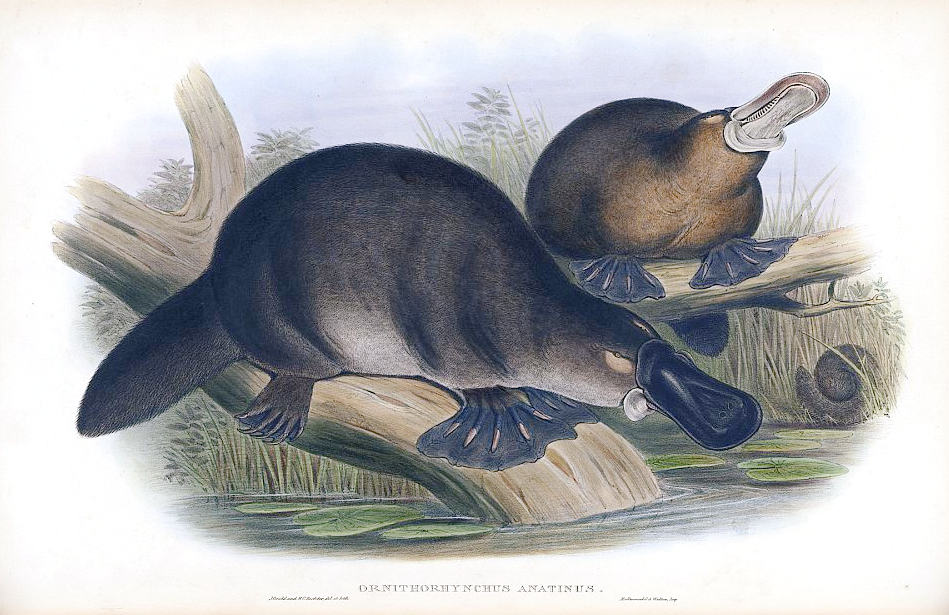

Weight varies considerably from 0.7 to 2.4 kg, with males being larger than females males average 50 cm in total length, while females average 43 cm, with substantial variation in average size from one region to another, and this pattern does not seem to follow any particular climatic rule and may be due to other environmental factors, such as predation and human encroachment. Platypuses have been heard to emit a low growl when disturbed and a range of other vocalizations have been reported in captive specimens. The nostrils are located on the dorsal surface of the snout, while the eyes and ears are located in a groove set just back from it this groove is closed when swimming. Unlike a bird's beak, the snout of the platypus is a sensory organ with the mouth on the underside. The webbing is more significant on the front feet and is folded back when walking on land. It has webbed feet and a large, rubbery snout these features appear closer to those of a duck than to those of any known mammal. The platypus uses its tail for storage of fat reserves. The fur is waterproof, and the texture is akin to that of a mole. The body and the broad, flat tail of the platypus are covered with dense, brown fur that traps a layer of insulating air to keep the animal warm. Although captive breeding programmes have had only limited success and the platypus is vulnerable to the effects of pollution, it is not under any immediate threat. Until the early 20th century, it was hunted for its fur, but it is now protected throughout its range. The platypus is the animal emblem of the state of New South Wales. The unique features of the platypus make it an important subject in the study of evolutionary biology and a recognisable and iconic symbol of Australia it has appeared as a mascot at national events and is featured on the reverse of its 20-cent coin. It is one of the few venomous mammals, the male platypus having a spur on the hind foot that delivers a venom capable of causing severe pain to humans. The unusual appearance of this egg-laying, duck-billed, beaver-tailed, otter-footed mammal baffled European naturalists when they first encountered it, with some considering it an elaborate fraud. It is the sole living representative of its family and genus, though a number of related species have been found in the fossil record. Together with the four species of echidna, it is one of the five extant species of monotremes, the only mammals that lay eggs instead of giving birth. The platypus is a semiaquatic mammal endemic to eastern Australia, including Tasmania.


 0 kommentar(er)
0 kommentar(er)
